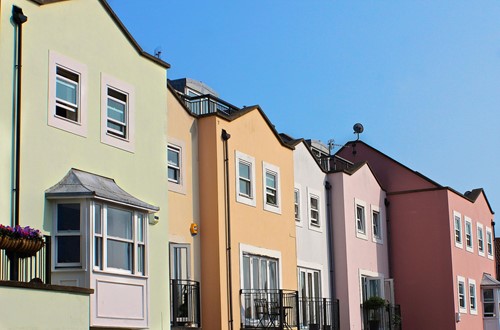
A common sight in historic metropolitan areas, row houses are an iconic example of multifamily housing structures. As their name suggests, row houses are oriented next to one another “in a row” and without a space in between. Each home is separate from the others, but the structure or building often shares a homeowners’ association or similar governing body.
Along with these key factors, there are plenty of characteristics that make row houses special.
Row houses can typically be identified by the following features:
In addition to aesthetic and structural elements, row houses often line entire streets or city blocks. In the United States, you’re likely to find row house neighborhoods in major urban centers with prominent historic districts, such as San Francisco, New York City, Boston and Baltimore.
While following the characteristics listed above, row house construction also falls into some basic architectural style categories. The main architectural styles of row houses include:
Row houses are popular among many homeowners for their historical significance and unique architectural features. Many cities strive to maintain the integrity and appearance of row houses, so residents can continue to enjoy their aesthetic and charm for decades to come.

Maria Mercedes Gomez & Larissa Porta we were born in Nicaragua, but had the opportunity to come to the U.S. over 30 years ago. As immigrants in this country, we knew that we had to work very hard to receive and accomplish our goals in life. For everything, we are very thankful every day! Our experience does teach us and remind us that we have a responsibility to pay forward to our customer.
We believe that today's real estate market demands a team approach where our individual skills come together to offer our customers the benefit of twice the knowledge and experience, not to mention commitment to work diligently to assist you in meeting your real estate goals.